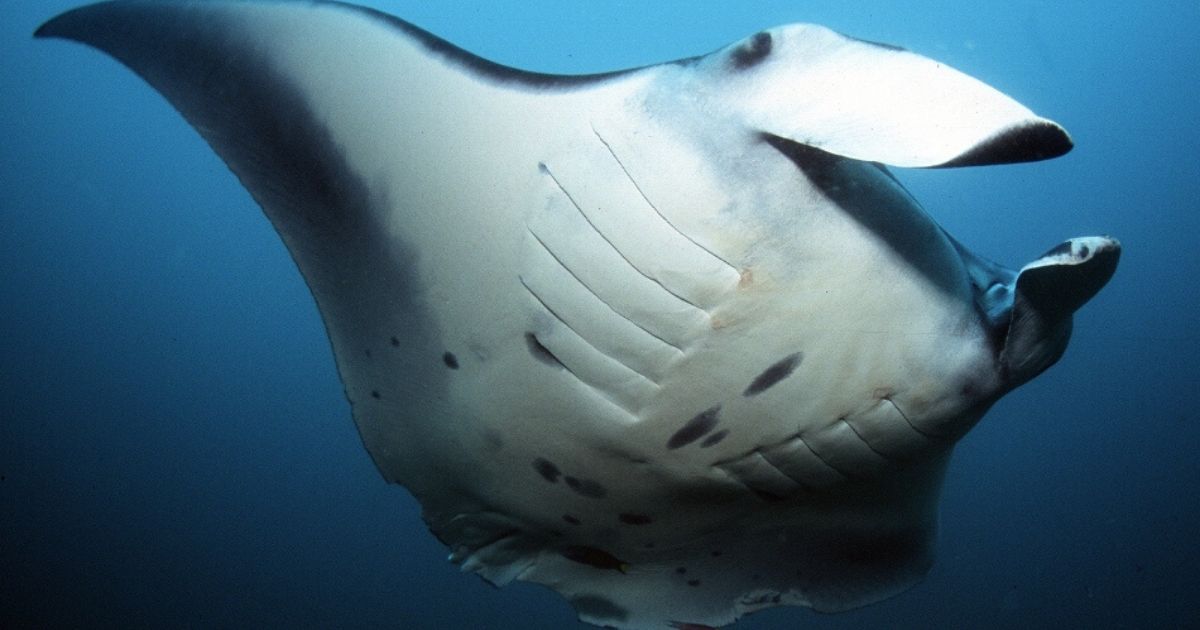The reef manta ray (Mobula alfredi) is a species in decline. Years of overfishing, largely for their gill rakers, a cartilaginous structure used to help filter plankton through their mouths, has placed this majestic fish on the International Union for Conservation of Nature Red List.
This has led to an urgent call from scientists for more research to be undertaken on the biology and ecology of reef manta rays in the hope that conservation efforts will be directed more effectively in the future.
One such study, recently published in the journal PLOS One by researchers at the University of New Caledonia, has discovered that reef manta rays can dive up to 672 meters, a new record for the species.
Hugo Lassauce, lead author on the project and his colleagues set out to better understand the habitat use of the species in the waters surrounding New Caledonia, an area never studied before. Using satellite archival tags from 11 individuals, the researchers investigated the fine-scale movements of the rays. All tagged individuals performed dives exceeding 300 meters in depth, with a maximum depth of 672 meters, over 200 meters greater than what has previously been recorded. The incredible depths reached suggest that feeding opportunities could be insufficient in the upper layer of the water column in New Caledonian waters, thereby forcing manta rays to explore deeper food resources.
Reef mantas are a poikilothermic species, meaning that their internal temperature varies with an optimum range somewhere between 20 to 26 °C. However, the temperatures recorded at the depths these rays are venturing to were always less than 20°C, even getting as cold as 7.6°C at the deepest point. It would be sensible to think that this may cause problems for the ability of the manta ray to function. But the researchers suggest that basking in warm shallow water before diving and active swimming during descent and ascent could be used to increase the body temperature.
Previous studies have also shown that manta and devil rays have the incredible capacity to transmit warmth to the brain using veins and arteries that pass each other in the pectoral fin as a counter‐current heat exchanger. They believe that this mechanism would allow manta rays to produce enough heat to reach deeper food resources and feed for a relatively short amount of time despite the cold temperatures. This behaviour has been observed for other rays and other fish such as tunas and sharks.
The authors concluded by saying “comprehensive knowledge of the distribution and the habitat use of the reef mantas is necessary to inform conservation and fisheries management measures to ensure the long-term survival of the species”. Whilst protective legislation has improved in recent years and numerous marine protected areas (MPAs) have been created throughout the known range of reef manta rays, many are coastal and do not extend into the deeper offshore waters. This study highlights the importance of incorporating offshore waters and deep-water foraging grounds in manta conservation initiatives.
Story by Ellis Moloney
Journal Reference
Hugo Lassauce, Olivier Chateau, Mark V. Erdmann, Laurent Wantiez. Diving behavior of the reef manta ray (Mobula alfredi) in New Caledonia: More frequent and deeper night-time diving to 672 meters. PLOS ONE, 2020; 15 (3).



